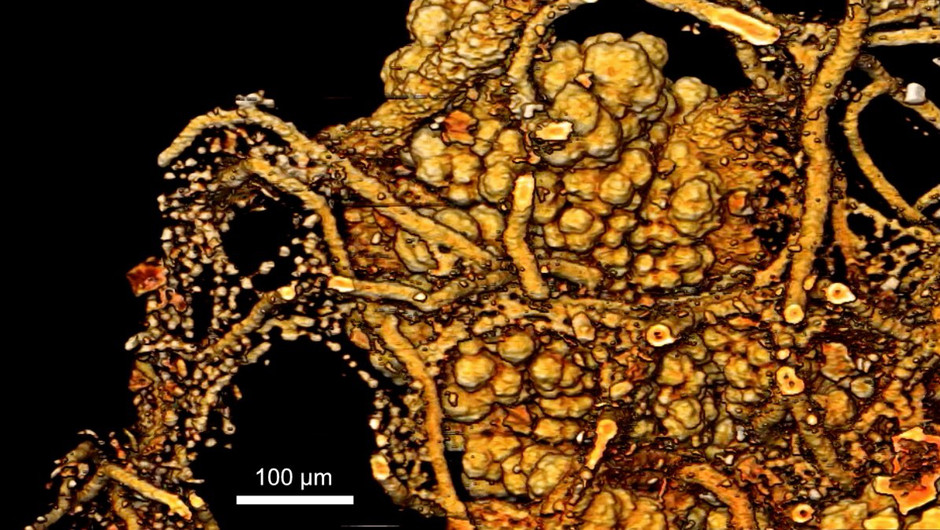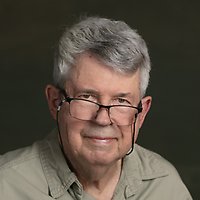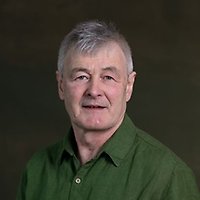Forskningsområden: Geovetenskap, Paleontologi
Forskningsämnen: Evolution, Flercellighet, Fossil, Proterozoikum, Tidigt liv
Project overview
Project period: 2001 – current
Participating departments from the museum: Palaeobiology, Geosciences
Since the beginning of life on Earth about 4 billion years ago, Earth’s biosphere has been almost exclusively microbial. But about half a billion years ago multicellular organisms began to establish their dominance. Using new analytical and imaging methods and the growing biological understanding of the relationships between living organisms we aim to create a new picture of how the biosphere was transformed from microbial mats to the many-faceted organismal world we see today.
Among the organisms alive today there are about twenty independently evolved examples of multicellularity. Three of these are totally dominant: fungi, plants, and animals. Whether multicellularity evolved in other, now extinct, lineages we can see by studying the fossil record.
New fossil localities are constantly discovered where delicate tissues have been preserved. One example is fertilized eggs of early animals. By examining the fossils under intensive X-ray radiation generated in a synchrotron we can perform microtomography (the same method as CAT scans used in hospitals) on these sand grains and view external and internal details less than a thousand of a millimeter in size. Three-dimensional digital objects can then be investigated in a powerful computer: sliced lengthwise and crosswise, measured, rendered transparent, coloured, etc., without anything being destroyed.
Project description
We have discovered that the earliest embryo-like fossils seem to have been unicellular organisms that could form propagules within a resting membrane. Maybe these are progenitors of animals, and their mechanisms of cell cleavage were inherited by “proto-animals” that modified them to form multicellular individuals. To answer this question we have micro-X-rayed thousands of fossil sand grains to understand their life cycle.
The closest multicellular relatives to animals are the fungi. Although fungi have probably existed at least as long as animals, we have few fossils of them, but we have begun to discover numerous well-preserved fungal fossils near deep-sea hot springs, several hundreds of meters below the sea floor. Using X-ray microtomography we can see how they bore into minerals and live in symbiotic relationship with other organisms. We hope to elucidate the Proterozoic evolution of fungi by analyzing fossil fungi in rocks representing such ancient deep environments.

Symbiotic organisms in Eocene basalt, Koko Seamount, Pacific Ocean.The coarser strands are fungal hyphae that have been overgrown by prokaryotic organisms, probable archeans (the curtains of “pearl necklaces”) and iron-oxidating bacteria (the cauliflower-like structures). X-ray microtomographic rendering, Stefan Bengtson. From Bengtson et al. (2014).
Financial support
- Vetenskapsrådet (https://www.vr.se
 External link. )
External link. ) - Danmarks Grundforskningsfond (https://dg.dk/en/
 External link.)
External link.) - Paul Scherrer Institut (https://www.psi.ch
 External link.)
External link.) - Université de Poitiers (https://www.univ-poitiers.fr
 External link.)
External link.) - Centre National pour la Recherche Scientifique (https://www.cnrs.fr)
Selected publications
- Bengtson (2002). Origins and early evolution of predation., p. 289–317. In M. Kowalewski and P. H. Kelley (eds.), The Paleontological Society Papers 8. The fossil record of predation. The Paleontological Society doi:10.1017/S1089332600001133
- Rasmussen, S. Bengtson, I. R. Fletcher and N. Mcnaughton (2002). Discoidal impressions and trace-like fossils more than 1200 million years old. Science, 296: ss. 1112–1115. doi:10.1126/science.107016
- Warén, S. Bengtson, S. K. Goffredi and C. L. Van Dover (2003). A hot-vent gastropod with iron sulfide dermal sclerites. Science, 302: ss. 1007. doi:10.1126/science.1087696
- C. J. Donoghue, S. Bengtson, X.-P. Dong, N. Gostling, J., T. Huldtgren, J. A. Cunningham, C. Yin, Z. Yue, F. Peng and M. Stampanoni (2006). Synchrotron X-ray tomographic microscopy of fossil embryos. Nature, 442: ss. 680–683. doi:10.1038/nature04890
- W. Hagadorn, S. Xiao, P. C. J. Donoghue, S. Bengtson, N. Gostling, J., M. Pawlowska, E. C. Raff, R. A. Raff, F. R. Turner, C. Yin, C. Zhou, X. Yuan, M. B. Mcfeely, M. Stampanoni and K. H. Nealson (2006). Cellular and subcellular structure of Neoproterozoic animal embryos. Science, 314: ss. 291–294. doi:10.1126/science.1133129
- Bengtson, B. Rasmussen and B. Krapež (2007). The Paleoproterozoic megascopic Stirling Biota. Paleobiology, 33(3): ss. 351–381. doi:10.1666/04040.1
- Bengtson, V. Belivanova, B. Rasmussen and M. Whitehouse (2009). The controversial ‘Cambrian’ fossils of the Vindhyan are real but more than a billion years older. Proceedings of the National Academy of Sciences, USA, 106: ss. 7729–7734. doi: 10.1073 pnas.0812460106
- Kouchinsky, S. Bengtson, W. Feng, R. Kutygin and A. Val’kov (2009). The Lower Cambrian fossil anabaritids: Affinities, occurrences and systematics. Journal of Systematic Palaeontology, 7(3): ss. 241–298. doi:10.1017/S1477201909002715
- El Albani, S. Bengtson, D. E. Canfield, A. Bekker, R. Macchiarelli, A. Mazurier, E. Hammarlund, P. Boulvais, J.-J. Dupuy, C. Fontaine, F. T. Fürsich, F. Gauthier-Lafaye, P. Janvier, E. Javaux, F. Ossa Ossa, A.-C. Pierson-Wickmann, A. Riboulleau, P. Sardini, D. Vachard, M. Whitehouse and A. Meunier (2010). Large colonial organisms with coordinated growth behaviour in oxygenated environments 2.1 billion years ago. Nature, 466: ss. 100–104. doi:10.1038/nature09166
- Huldtgren, J. Cunningham, C. Yin, M. Stampanoni, F. Marone, P. C. J. Donoghue and S. Bengtson (2011). Fossilized nuclei and germination structures identify Ediacaran ‘animal embryos’ as encysting protists. Science, 334(6063): ss. 1696–1699. doi:10.1126/science.1209537
- Kouchinsky, S. Bengtson, S. Clausen, A. Gubanov, J. M. Malinky and J. S. Peel (2011). A Middle Cambrian fauna of skeletal fossils from the Kuonamka Formation, northern Siberia. Alcheringa, 35(1): ss. 123–189. doi:10.1080/03115518.2010.496529
- Tang, S. Bengtson, Y. Wang, X.-L. Wang and C.-Y. Yin (2011). Eoandromeda and the origin of Ctenophora. Evolution and Development, 13(5): ss. 408–414. doi:10.1111/j.1525-142X.2011.00499.x
- Bengtson, J. A. Cunningham, C. Yin and P. C. J. Donoghue (2012). A merciful death for the “earliest bilaterian,” Vernanimalcula. Evolution and Development, 14(5): ss. 421–427. doi:10.1111/j.1525-142X.2012.00562.x
- Ivarsson, S. Bengtson, V. Belivanova, M. Stampanoni, F. Marone and A. Tehler (2012). Fossilized fungi in subseafloor Eocene basalts. Geology, 40(2): ss. 163–166. doi:10.1130/G32590.1
- E. Canfield, L. Ngombi Pemba, E. Hammarlund, S. Bengtson, M. Chaussidon, F. Gauthier Lafaye, A. Meunier, A. Riboulleau, C. Rollion Bard, O. Rouxel, D. Asael, A. C. Wickmann and A. El Albani (2013). Oxygen dynamics in the aftermath of the Great Oxidation of the Earth’s atmosphere. Proceedings of the National Academy of Sciences, USA, 110(42): ss. 16736–16741. doi:10.1073/pnas.1315570110
- Bengtson, M. Ivarsson, A. Astolfo, V. Belivanova, C. Broman, F. Marone and M. Stampanoni (2014). Deep-biosphere consortium of fungi and prokaryotes in Eocene sub-seafloor basalts. Geobiology, 12(6): ss. 489–496. doi:10.1111/gbi.12100
- El Albani, S. Bengtson, D. E. Canfield, A. Riboulleau, C. Rollion Bard, R. Macchiarelli, L. Ngombi Pemba, E. Hammarlund, A. Meunier, I. Moubiya Mouele, K. Benzerara, S. Bernard, P. Boulvais, M. Chaussidon, C. Cesari, C. Fontaine, E. Chi-Fru, J. M. Garcia Ruiz, F. Gauthier-Lafaye, A. Mazurier, A. C. Pierson-Wickmann, O. Rouxel, A. Trentesaux, M. Vecoli, G. J. M. Versteegh, L. White, M. Whitehouse and A. Bekker (2014). The 2.1 Ga old Francevillian biota: biogenicity, taphonomy and biodiversity. PLoS One, 9(6:e99438): ss. 18 pp. doi:10.1371/journal.pone.0099438
- Bengtson and D. Collins (2015). Chancelloriids of the Cambrian Burgess Shale. Palaeontologia Electronica, 18(1): ss. 1–67. doi:10.26879/498
- Kouchinsky, S. Bengtson, S. Clausen and M. J. Vendrasco (2015). An early Cambrian fauna of skeletal fossils from the Emyaksin Formation, northern Siberia. Acta Palaeontologica Polonica, 60(2): ss. 421–512. doi:10.4202/app.2012.0004
- Bengtson, B. Rasmussen, M. Ivarsson, J. Muhling, C. Broman, F. Marone, M. Stampanoni and A. Bekker (2017). Fungus-like mycelial fossils in 2.4 billion-year-old vesicular basalt. Nature Ecology & Evolution, 6(2): ss. 6 pp. doi:10.1038/s41559-017-0141
- Bengtson, T. Sallstedt, V. Belivanova and M. Whitehouse (2017). Three-dimensional preservation of cellular and subcellular structures suggests 1.6 billion-year-old crown-group red algae. PLoS Biology, 15(3): ss. 38 pp. doi:10.1371/journal.pbio.2000735
- Drake, M. Ivarsson, S. Bengtson, C. Heim, S. Siljeström, M. J. Whitehouse, C. Broman, V. Belivanova and M. E. Åström (2017). Anaerobic consortia of fungi and sulfate reducing bacteria in deep granite fractures. Nature Communications, 8(55): ss. 9 pp. doi:10.1038/s41467-017-00094-6
- Ivarsson, S. Bengtson, H. Drake and W. Francis (2018). Fungi in deep subsurface environments. Advances in Applied Microbiology, 102: ss. 83–116. doi:10.1016/bs.aambs.2017.11.001
- El Albani, M. G. Mangano, L. A. Buatois, S. Bengtson, A. Riboulleau, A. Bekker, K. Konhauser, T. Lyons, C. Rollion-Bard, O. Bankole, S. G. Lekele Baghekema, A. Meunier, A. Trentesaux, A. Mazurier, J. Aubineau, C. Laforest, C. Fontaine, P. Recourt, E. Chi Fru, R. Macchiarelli, J. Y. Reynaud, F. Gauthier-Lafaye and D. E. Canfield (2019). Organism motility in an oxygenated shallow-marine environment 2.1 billion years ago. Proceedings of the National Academy of Sciences, 116(9): ss. 3431–3436. doi:10.1073/pnas.1815721116
- Yin, K. Vargas, J. Cunningham, S. Bengtson, M. Zhu, F. Marone and P. Donoghue (2019). The early Ediacaran Caveasphaera foreshadows the evolutionary origin of animal-like embryology. Current Biology, 29(24): ss. 4307–4314. doi:https://doi.org/10.1016/j.cub.2019.10.057
- Ivarsson, H. Drake, A. Neubeck, T. Sallstedt, S. Bengtson, N. M. W. Roberts and B. Rasmussen (2020). The fossil record of igneous rock. Earth-Science Reviews, 210(103342): ss. 20 pp. doi:https://doi.org/10.1016/j.earscirev.2020.103342
- Bengtson, B. Rasmussen, J.-W. Zi, I. R. Fletcher, J. G. Gehling and B. Runnegar (2021). Eocene animal trace fossils in 1.7-billion-year-old metaquartzites. Proceedings of the National Academy of Sciences, 118(40): ss. 8 pp. doi:10.1073/pnas.2105707118
- Ivarsson, H. Drake, A. Neubeck, O. Snoeyenbos-West, V. Belivanova and S. Bengtson (2021). Introducing palaeolithobiology. GFF, 143(2–3): ss. 305–319. doi:10.1080/11035897.2021.1895302
- T. S. Little, K. C. Johannessen, S. Bengtson, C. S. Chan, M. Ivarsson, J. F. Slack, C. Broman, I. H. Thorseth, T. Grenne, O. J. Rouxel and A. Bekker (2021). A late Paleoproterozoic (1.74 Ga) deep-sea, low-temperature, iron-oxidizing microbial hydrothermal vent community from Arizona, USA. Geobiology, 19(3): ss. 228–249. doi:10.1111/gbi.12434
- Kouchinsky, R. Alexander, S. Bengtson, F. Bowyer, S. Clausen, L. E. Holmer, K. A. Kolesnikov, I. V. Korovnikov, V. Pavlov, C. B. Skovsted, G. Ushatinskaya, R. Wood and A. Y. Zhuravlev (2022). Early–middle Cambrian stratigraphy and faunas from northern Siberia. Acta Palaeontologica Polonica, 67(2): ss. 341–464. doi:10.4202/app.00930.2021
External participants
We cooperate with several non-Swedish institutions within this field of science, particularly University of Bristol, University of Western Australia, Université de Poitiers and University of Southern Denmark.
Project participants
Artem Kouchinsky | Associated researcher
Project leader

Project members



